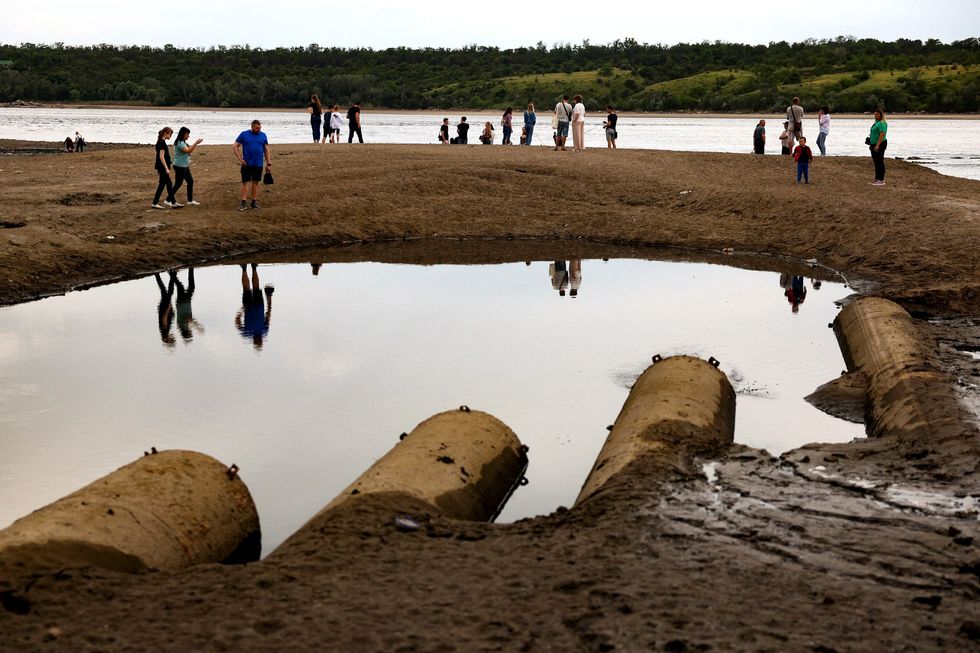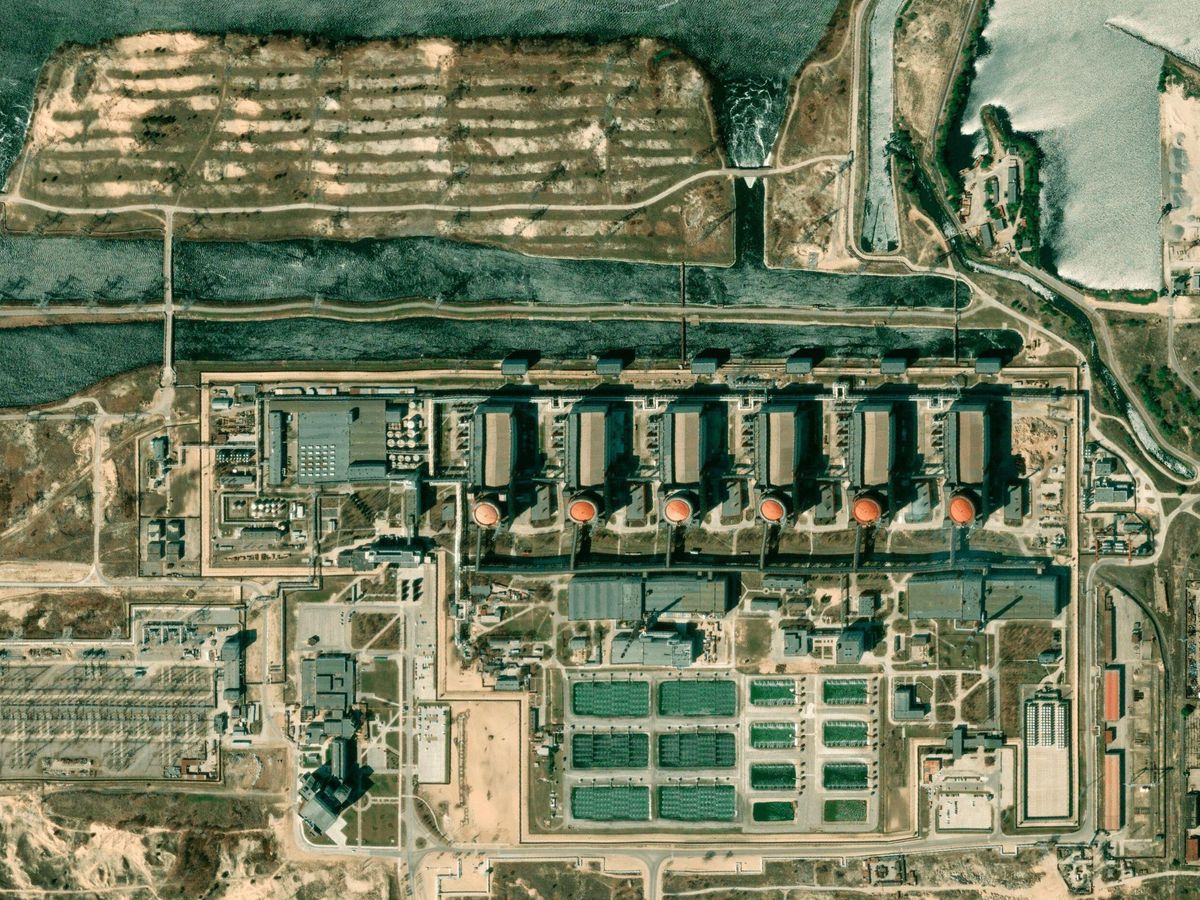A thick fog of war has enveloped Ukraine’s Zaporizhzhia power plant since Russian forces seized it 16 months ago. And the crisis has only hit new levels in recent weeks. Europe’s largest nuclear power plant lies on the front line amid a Ukrainian counteroffensive whose full firepower remains to be unleashed. Russia’s readiness to wreak havoc appears both larger and less predictable after the destruction of the Kakhovka Dam and an armed rebellion aimed at Moscow. And both sides have been warning that the other is preparing a nuclear provocation at the Zaporizhzhia plant.
Independent nuclear experts inside and outside Ukraine offer varying and at times contradictory assessments of the likelihood that the conflict will spark a radiological catastrophe. But all agree on one fact: the risk of a meltdown that spreads radioactive poisons across the region would be greater if fission reactions at the plant had not ceased 10 months ago.
In turn, one of the situation’s biggest intangibles is whether Russia will keep Zaporizhzhia’s half-dozen reactors offline, and how Ukraine and the international community might ensure that they do. The focus inside Ukraine is on the embattled plant’s reactor-generator Unit 5, which the plant’s Russian occupiers have kept in a state of “hot shutdown“—a mode of reactor shutdown, as contrasted to a cold shutdown, in which the reactor’s fuel goes relatively cold.
Unit 5’s main pumps continue to circulate cooling water and generate steam, and that means its reactor could be restarted in a matter of hours—regenerating dangerous, short-lived fission products such as radioactive iodines and multiplying by an order of magnitude the heat pouring off the reactor.
Grid operator Ukrenergo urged Ukrainians to use restraint amid hot weather.
In that scenario, an incident that knocked out the plant’s safety systems could cause radioactive release of regional significance, according to a 1 June LinkedIn article posted by Georgiy Balakan, a former special advisor to the president of Energoatom, Ukraine’s state-owned nuclear generator. “The countdown will go not to 10 days before the damage to the core, but to hours,” wrote Balakan.
Power demand will be much higher come this winter. And there is no sign that Russia will stop targeting Ukraine’s energy infrastructure.
For a month now, Rosatom, the Russian state-owned nuclear energy giant operating the occupied plant, has ignored repeated orders by Ukraine’s nuclear regulator to turn off Unit 5’s big pumps and cool it down. The State Nuclear Regulatory Inspectorate of Ukraine cites water supplies diminished by the dam’s destruction, as well as the deteriorated conditions on-site under Russian occupation.
Rosatom’s intransigence has some Ukrainian experts pondering how the country might force Russia’s hand. One possible stratagem shared with IEEE Spectrum by a senior nuclear safety expert would be to constrain the plant’s links to the power grid. Depriving the plant of the power required to run its big pumps would also make its reactors much harder to restart.
Deliberately cutting electricity flows flies in the face of conventional nuclear safety practice, which seeks to maximize power supplies to critical safety systems. Ukrainian linesmen repeatedly risked their lives last year, repairing breaks that bumped the Zaporizhzhia station offline while reactors were operating at full tilt.
But independent experts say even Unit 5’s fuel has now cooled to a degree where its safety systems require minimal power.
Several unusual media statements yesterday raised the possibility that a creative intervention such as trimming the plant’s power feed could be underway already. Energoatom reported that Rosatom was pushing the Unit 4 reactor into hot shutdown, then deleted its posts, explaining that they were “unconfirmed.”
Around the same time yesterday, Ukraine’s military intelligence chief Kyrylo Budanov, who has claimed for weeks that Russia would provoke a nuclear incident, then told Reuters that, “the threat is decreasing.” Budanov declined to explain the revised threat assessment.
Desperate Measures
To restart one or more reactors, Rosatom must lift the reactors’ control rods and dilute the boronic acid in the plant’s primary cooling water. The latter requires operation of the main circulation pumps (MCP), according to the senior safety expert who spoke with IEEE Spectrum. “Without MCP it is very difficult,” says the source, whose identity has been withheld, because they are not authorized to speak to the press.
Experts say Zaporizhzhia’s backup cooling systems can keep the plant’s relatively cool nuclear fuel from melting down and causing a radioactive release. And they say the backup systems serving the entire site require less power than a single unit’s main circulation pump.
MIT nuclear engineering professor Jacopo Buongiorno goes even further. He says it should be possible to keep Zaporizhzhia’s reactors and spent fuel safe even if the plant’s water pumps become inoperable, or if it should run out of water. “If there were no water, the facility’s operators could use air-cooling techniques to draw heat from the fuel,” Buongiorno told Bloomberg BNN last month.

In fact, simulations by a Ukrainian research team coordinated by Balakan confirm Buongiorno’s suggestion. The team found that fans consuming just 55 kilowatts—a trivial load easily supplied by mobile generators—could cool down any of Zaporizhzhia’s power units. (Each of Zaporizhzhia’s 20 diesel generators can supply 5.6 megawatts.)
Such findings underpin a statement released earlier this week by the American Nuclear Society, downplaying the risk of a catastrophe. “Our experts have carefully considered ‘worst case scenarios,’ including bombardment and deliberate sabotage of the reactors and spent fuel storage canisters. They cannot foresee a situation that would result in radiation-related health consequences to the public,” stated the ANS.
However, the ANS assessment assumes that Zaporizhzhia’s reactors are not restarted. Balakan clearly considers Russia’s leadership to be capable of restarting and deliberately scuttling a nuclear reactor, if doing so advances its military and political objectives. In his LinkedIn article, Balakan calls that threat, “the Russian lever of influence on Ukraine and the World.”
The situation at Zaporizhzhia is unlike previous accident scenarios such as the Chernobyl accident and the Fukushima Daichii meltdowns, as well as the terrorist attacks nuclear operators prepare for, stresses retired Westinghouse Electric nuclear power plant controls expert Oleg Brenman. At Zaporizhzhia, he says, Russian forces have both “full control” of the site and “deep technical knowledge,” since Rosatom designed and built the plant.
The ANS statement also does not rule out the potential for severe physical damage and contamination of the site that could render one or more units inoperable for years, or permanently.
Zaporizhzhia represented a quarter of Ukraine’s power supply before the invasion, and that capacity is hard to replace. Ukraine expects to face power shortages this summer, primarily due to needed repairs at Energoatom’s three operating power plants, each of which sustained some damage as a result of grid faults caused by Russian air strikes on transmission substations.
Kyiv-based transmission grid operator Ukrenergo urged citizens to use restraint yesterday amid hot weather: “Going without air conditioning is very difficult. But please do not forget that the energy system is currently in a difficult situation due to repairs.”
Power demand will be much higher come this winter. And there is no sign that Russia will stop targeting Ukraine’s energy infrastructure.
Ukrainian experts cite one additional opportunity to get Rosatom to cool down Unit 5 at Zaporizhzhia: pressure from the international community, including the International Atomic Energy Agency (IAEA). Neither appears to be forthcoming, the experts note.
There was only muted international response to the Kakhovka Dam’s destruction and the flooding it caused. And Ukrainian experts such as Balakan and Olga Kosharna, a former advisor to Ukraine’s nuclear regulator, bemoan what they see as inappropriate IAEA neutrality vis-à-vis Russia. And they say the IAEA has recently taken positions that are tilted in Russia’s favor.
Kosharna notes that the IAEA’s regular updates on Zaporizhzhia repeatedly state that inspectors see none of the explosives Ukraine alleges Russia has planted there, while downplaying the limits Russia places on its inspectors’ access to the site.
The IAEA has never called attention to Rosatom’s flaunting of the shutdown orders from Ukraine’s nuclear regulator.
- Russia Annexes Nuclear Station, Invites Sanctions ›
- Nuclear Energy Brinkmanship in Ukraine ›
- Fitful Ukrainian Nuclear Plant Stokes Powerful Fears ›
- As Ukraine Builds New Reactors, Renewables Beckon - IEEE Spectrum ›
Peter Fairley has been tracking energy technologies and their environmental implications globally for over two decades, charting engineering and policy innovations that could slash dependence on fossil fuels and the political forces fighting them. He has been a Contributing Editor with IEEE Spectrum since 2003.



